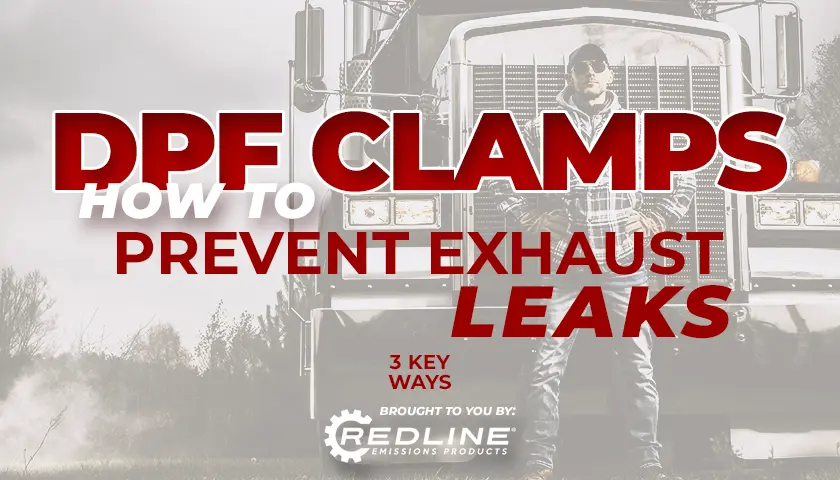
How To: Prevent Exhaust Leaks in DPF Clamps
In the world of diesel engines and emissions control, even seemingly simple components like DPF clamps play a crucial role in ensuring optimal performance and avoiding issues with the diesel emissions system. In this article, we’ll dive into the proper installation of DPF clamps (sometimes called V-Band Clamps), a topic that often gets overlooked. This is important because when done incorrectly, it can often lead to exhaust leaks, creating many different issues with the emissions system.
Here are the three things you need to know about (Diesel Particulate Filter) DPF clamps to prevent exhaust leaks:
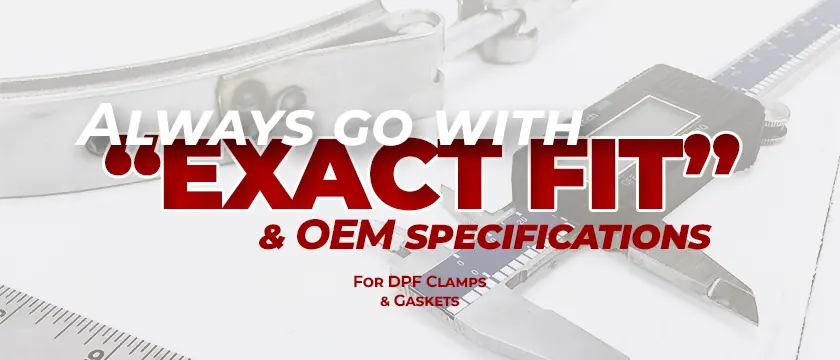
#1 – Understanding the Engineering Behind DPF V-Band Clamps
There is a lot of engineering that goes into a very simple DPF clamp. The angles on the flange must match the apex of the v-band clamp. Different clamps have varying apex sizes, even with the same diameter. Additionally, the gasket thickness is an important part of ensuring a tight seal. Manufacturers design these clamps meticulously to ensure a proper seal.
Therefore, it’s very important that you purchase replacement v-band clamps and gaskets that are an “exact fit” and meet the OEM specifications. It is also crucial to follow recommended installation procedures to maintain this seal and avoid exhaust leaks.
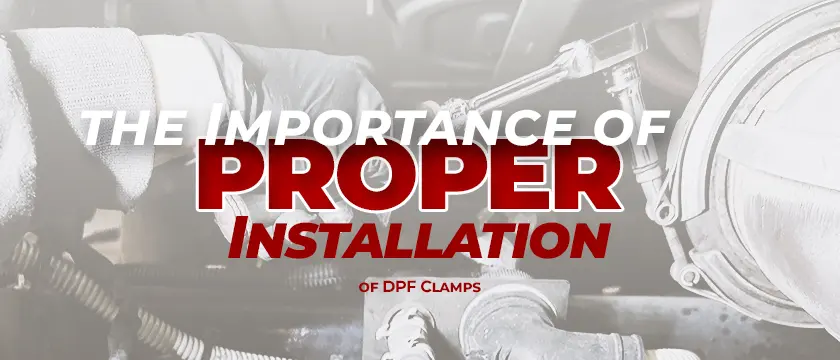
#2 – Proper Installation Procedure for DPFs
One of the more common mistakes we see technicians make when installing a DPF is using a 3/8” or 1/2” air gun to tighten the clamps. What is strange about this is that we rarely see a technician do this on a turbocharger clamp and yet they commonly make this installation mistake with the DPF.
Follow these steps to ensure the proper installation of a DPF Clamp:
Step 1. Install new gaskets on the inlet and outlet side. These are pressed in by hand.
Step 2. Slide the DPF in place and align the DPF and the v-band clamp on the inlet side ensuring there are no gaps.
Step 3. Apply a small amount of heat-rated anti-seize to the threads of the v-band clamp then install the nut by hand or with a rachet and socket. Do not over-torque the v-band clamp. Make sure the v-band clamp is properly seated on the flange into the apex of the v-band clamp. You can use a small rubber mallet to get the v-band clamp to seat properly. Tighten the nut to the manufacturer’s torque specs, tap again to make sure it is seated properly, and then retorque.
Step 4. Repeat steps 2 & 3 for the outlet end. In the case of a Freightliner one box, make sure the DPF is aligned on the outlet side as well. It is normal to have a small gap on the outlet side. That is what the dual-band clamp is for, to seal that gap. Tighten all bolt nuts slowly and securely, but do not over-torque.
Step 5: Run a regen and then re-torque again.
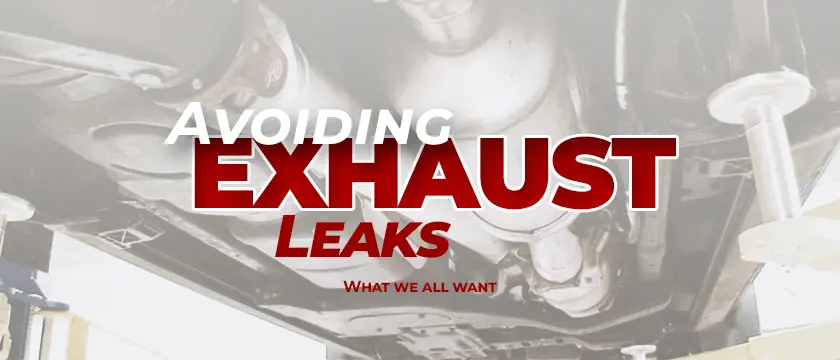
#3 – Exhaust Leaks from Improperly Installed DPF Clamps Cause Lots of Problems with the Emissions System
Exhaust leaks from improperly installed DPF clamps allow pressure and heat to escape the system diminishing the ability of the emission system to push the soot through the DOC, DPF, and finally the SCR.
Heat loss in the emission system will affect the ability of the system to oxidize the soot collected in the DPF.
Why is this important?
Today’s emission systems are highly engineered to control and process the emissions coming from the engine. Leaks can lead to more frequent manual or forced regens, face plugging, and increased DPF cleaning.
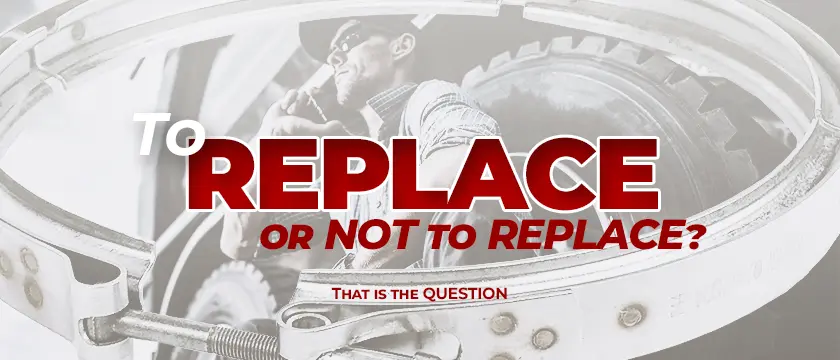
When Should You Replace the DPF Clamps and Gaskets?
There are occasions when a DPF has been removed when the system is being diagnosed for issues or to perform regular maintenance. Many technicians want to know if they can reuse DPF clamps and gaskets in those situations.
The short answer is MAYBE.
If the clamps and gaskets are relatively new, and they were not damaged when removed, it is possible to reuse the clamps and gaskets. It is important to make sure that the v-band clamp is wire brushed, and cleaned with penetrating oil to remove any contaminants which will interfere with ensuring a tight seal is maintained when reinstalled.
Typically speaking though we recommend that clamps and gaskets are replaced every time the DPF is removed. The cost of the clamps and gaskets is minimal compared to the cost of unscheduled downtime caused by exhaust leaks.
QUICK TIPS VIDEOS
This article contains insights pulled from 2 of our Quick Tips video series.
Visit the Quick Tips page to see more of these videos.
CLAMPS FAQ:
Q: Why is the specific design of a DPF V-Band clamp so critical to preventing leaks?
A: DPF clamps are not universal. There is significant engineering involved in the geometry of the clamp; specifically, the angles on the flange must perfectly match the apex of the V-band clamp. Even clamps of the same diameter may have different apex sizes. If these angles or the gasket thickness do not align with OEM specifications, the clamp cannot form a proper seal, leading to exhaust leaks. This is why using “exact fit” replacements is non-negotiable for emissions integrity.
Q: What is the most common installation mistake technicians make with DPF clamps?
A: The most frequent error is using a 3/8” or 1/2” air gun to tighten the clamps. While technicians rarely do this on turbocharger clamps, they often do it on DPFs. Using an impact gun can over-torque or warp the clamp before it is properly seated. DPF clamps should always be tightened by hand or with a ratchet and socket to the manufacturer’s torque specifications.
Q: Can I reuse old DPF clamps and gaskets during maintenance?
A: Ideally, no. We recommend replacing clamps and gaskets every time the DPF is removed. The cost of a new clamp is negligible compared to the downtime caused by a potential exhaust leak. However, if the clamps are relatively new, undamaged, and have been thoroughly wire-brushed and cleaned with penetrating oil, they may be reused. If there is any doubt, replace them.
Q: How do exhaust leaks from DPF clamps affect the overall emissions system?
A: An exhaust leak is not just a noise issue; it causes a loss of pressure and heat. The aftertreatment system relies on high temperatures to oxidise soot in the Diesel Particulate Filter (DPF) and facilitate the chemical reactions in the SCR. If heat escapes through a leak, the system cannot efficiently process emissions, leading to face plugging, increased frequency of manual/forced regenerations, and potential damage to downstream components.
Q: What is the proper procedure for tightening a DPF clamp?
A: You should follow a multi-step “tighten and tap” method:
- Align: Ensure the DPF and clamp are aligned with no gaps.
- Lubricate: Apply heat-rated anti-seize to the clamp threads.
- Seat: Tighten the nut by hand, then use a small rubber mallet to tap around the clamp to ensure the V-band is fully seated on the flange.
- Torque: Tighten to spec, tap again, and re-torque.
- Verify: After running a regeneration cycle, re-torque the clamps one final time to account for thermal expansion.
Q: Why do I need to re-torque the clamps after a regeneration?
A: Thermal expansion and contraction can slightly loosen the clamping force after the initial heat cycle. Running a regen gets the system up to operating temperature, allowing the components to settle. Re-torquing ensures the seal remains tight during regular operation.
Q: Is it normal to have a gap on the outlet side of a Freightliner “One Box” unit?
A: Yes, a small gap on the outlet side of a Freightliner One Box DPF is normal. The system utilises a specific dual-band clamp designed to seal that gap. Attempting to force the gap closed without the proper clamp or alignment can damage the components.
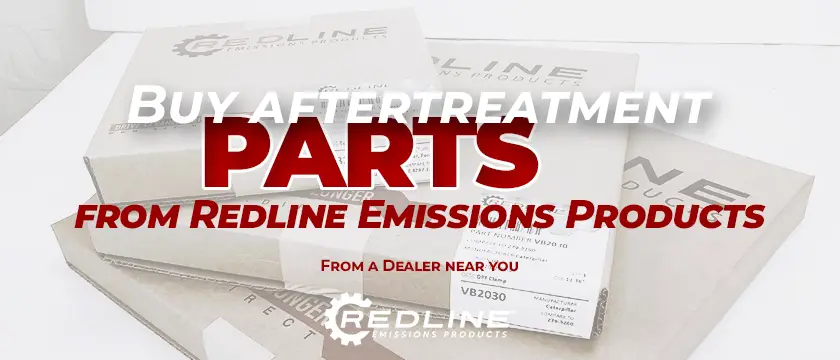
Buy Aftertreatment Replacement Parts from Redline Emissions Products Dealers
There are 5 compelling reasons you should ask for our aftertreatment replacement parts by name:
Quality: OEM replacement “exact fit” and quality with an industry-leading warranty.
Selection. We provide you with access to a wide selection spanning multiple manufacturers and brands so you can get everything you need from one supplier.
Availability. We have large inventories in multiple warehouses in the US and Canada ensuring quick access to any parts you require.
Packaging. Our products are packaged with all the OEM numbers and cross-references printed clearly on the packaging. Our parts are packaged individually to protect them from being damaged when stocked in the warehouse or in transit.
Training. We provide industry-specific training and education for our dealers’ and distributors’ parts and salespeople so that they can answer your questions and help you make the best choices when buying aftertreatment replacement parts.
Additionally, we provide all our customers with technical support. Call us today to get started.
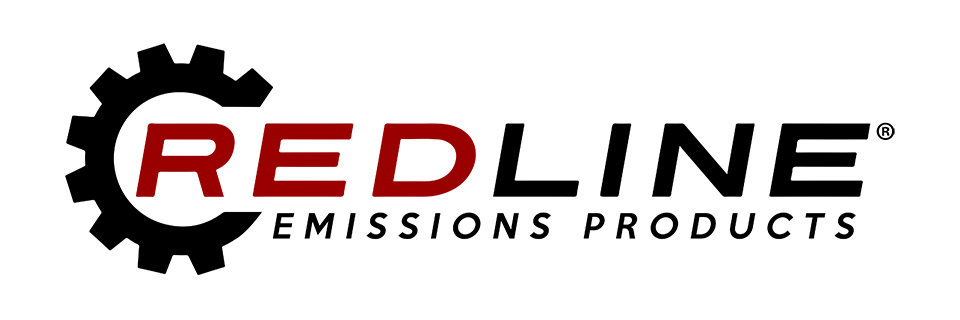
For inquiries or more information on our aftertreatment parts, DFP Cleaning equipment, or how to become an authorized REP distributor, feel free to contact us. We are here to assist you and provide the support you need every step of the way.
Want to find out more about becoming a Redline Emissions Products® dealer? Call 888-564-4027 and get in touch with our team. Anthony and Nadjara are happy to answer your questions.
Need Tech Support or need help troubleshooting a DPF problem? Contact REP Support at 1-888-564-4209







